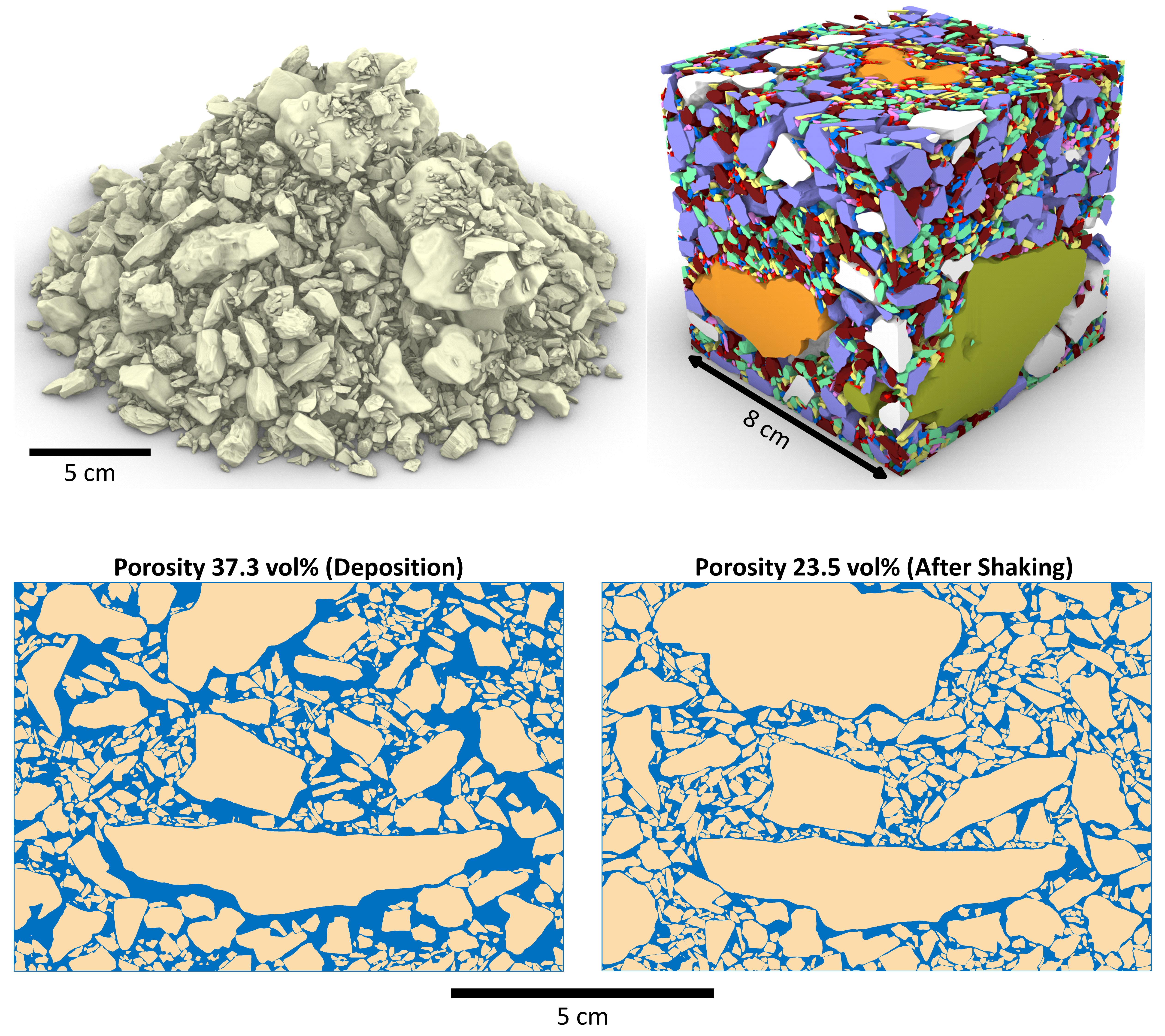Deep underground, collapsed salt caverns become chaotic rubble fields. How fluids move through rubble could affect the safety of nuclear waste storage.
"Rubble Characteristics Associated with Room Collapse at the Waste Isolation Pilot Plant: Impact of Salt Clast Shapes and Size Distributions on the Depositional Pore System" by Robert Lander, Edward Matteo, Linda Bonnell, Thomas Dewers, Melisa Mills, James Guilkey, Chven Mitchell, and John Stormont
What happens when a nuclear waste storage cavern in a salt formation collapses? The result is jumbled salt rubble with fluid storage and transport properties that are hard to predict. Using 3D simulations based on real salt fragments from WIPP in New Mexico — from 1 mm grains to 10 cm blocks — we found rubble porosity can vary widely (~28–48 vol%) depending on fragment size distribution, shape, and friction. These results improve our ability to anticipate how fluids — and potentially radionuclides — may move through collapsed sections of a repository.
Read the full article in InterPore Journal: https://doi.org/10.69631/ipj.v2i3nr45

